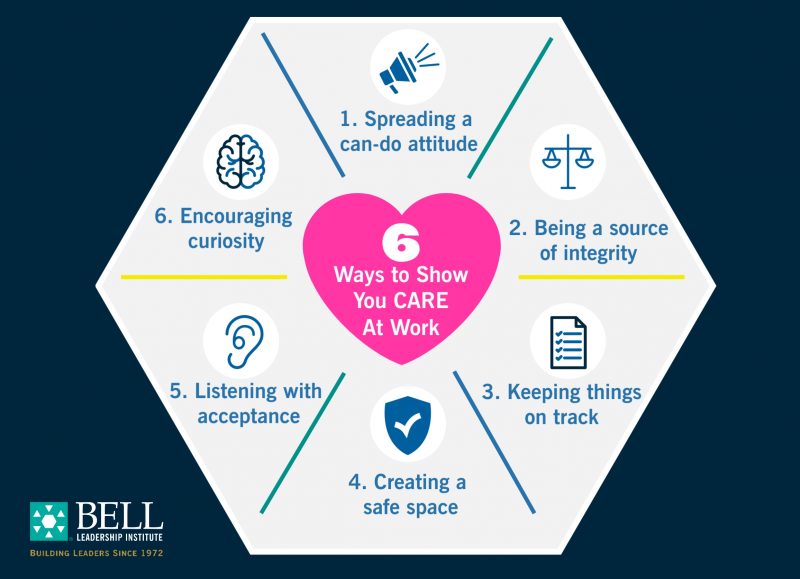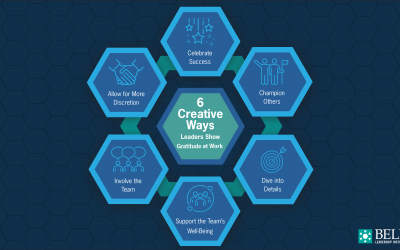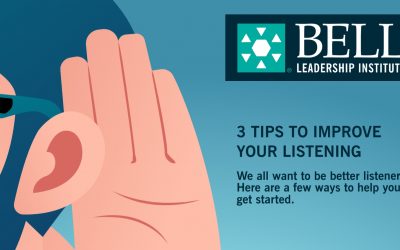UNDERSTANDING LEADERSHIP
Six Ways to Show You Care at Work
We can show care towards every human being we encounter. This includes the people we work with.
Read Time: 10 min.

We can show care towards every human being we encounter. This includes the people we work with. Demonstrating that you care to your colleagues and everyone around the office ensures positive, effective work relationships. How you show you care in a workplace setting might not be intuitive if it’s not something you’re used to thinking about. Here are six not-so-obvious ways you can demonstrate care to build more effective relationships at work:
About
Demonstrating that you care to your colleagues and everyone around the office ensures positive, effective work relationships. Using these six approaches, we become a better leader in our workplace.
Your own intuitive ways of showing you care are deeply tied to your personality patterns and who you are as a person. To learn more about effective ways to harness your strengths and develop your personality skills to build yourself and others, register for an upcoming Achievers seminar in Chapel Hill.
1. Spreading a can-do attitude.
Being a positive encouragement to others is a powerful force. When others know that you are behind them, cheering on their success, and always willing to seek the best solutions, they are empowered to be better and do better.
2. Being a source of integrity.
When others know they can count on you as a beacon of honesty and truth, it demonstrates a true sense of care for them. Giving constructive feedback, treating people with equity and fairness, standing up for what is right—all are indicative of how you care about people and want the best for them.
3. Keeping things on track.
At first it might be hard to envision being a task manager as an act of care or service, but there is real value in having someone who keeps the train running on time and in order. Deadline reminders, clearly stated priorities, and solid decisions come from the heart.
4. Creating a psychologically safe space.
There is a tangible sense of caring in telling someone it’s okay to fail, in being a safe person to come to when things start to spin out of control. We all need individuals who create calm and help us to decompress and look at the bigger picture when we are too wrapped up to do it on our own.
5. Listening with acceptance.
In this world of so much intense busyness, taking a moment to listen attentively without judgement, with understanding, forgiveness, and support means a great deal. Accepting others as they are and moving toward people allows for positive outcomes and opportunities even in the most challenging situations.
6. Encouraging curiosity.
Those who find joy in the unknown and see opportunities in uncertainty can be just the light and imagination we need in uncertain times. Your curiosity rather than distress can be a form of care that inspires innovation, embraces spontaneity, and adjusts to change easily.
Talk to a Bell Leadership expert.
Ready to dramatically improve your leadership results like so many of our clients?
Recent News and Insights
Six Keys to Setting Annual Goals with Your Team
With the right approach, annual goal setting can be one of the most beneficial practices you undertake with your team. Ending your year by reflecting on what has happened and making plans for what is to come will set the next phase of your business up for success.
Six Creative Ways Leaders Show Gratitude at Work
UNDERSTANDING LEADERSHIP Six Creative Ways Leaders Show Gratitude at Work Demonstrating thankfulness for our colleagues and team members is an important part of being a great leader; it builds positive working relationships and a healthy organizational culture. Read...
Listen Like You Mean It
As you work towards honing your listening skills, these first steps will put you on the right track, but sustained listening requires ongoing practice, even for the best listeners.



